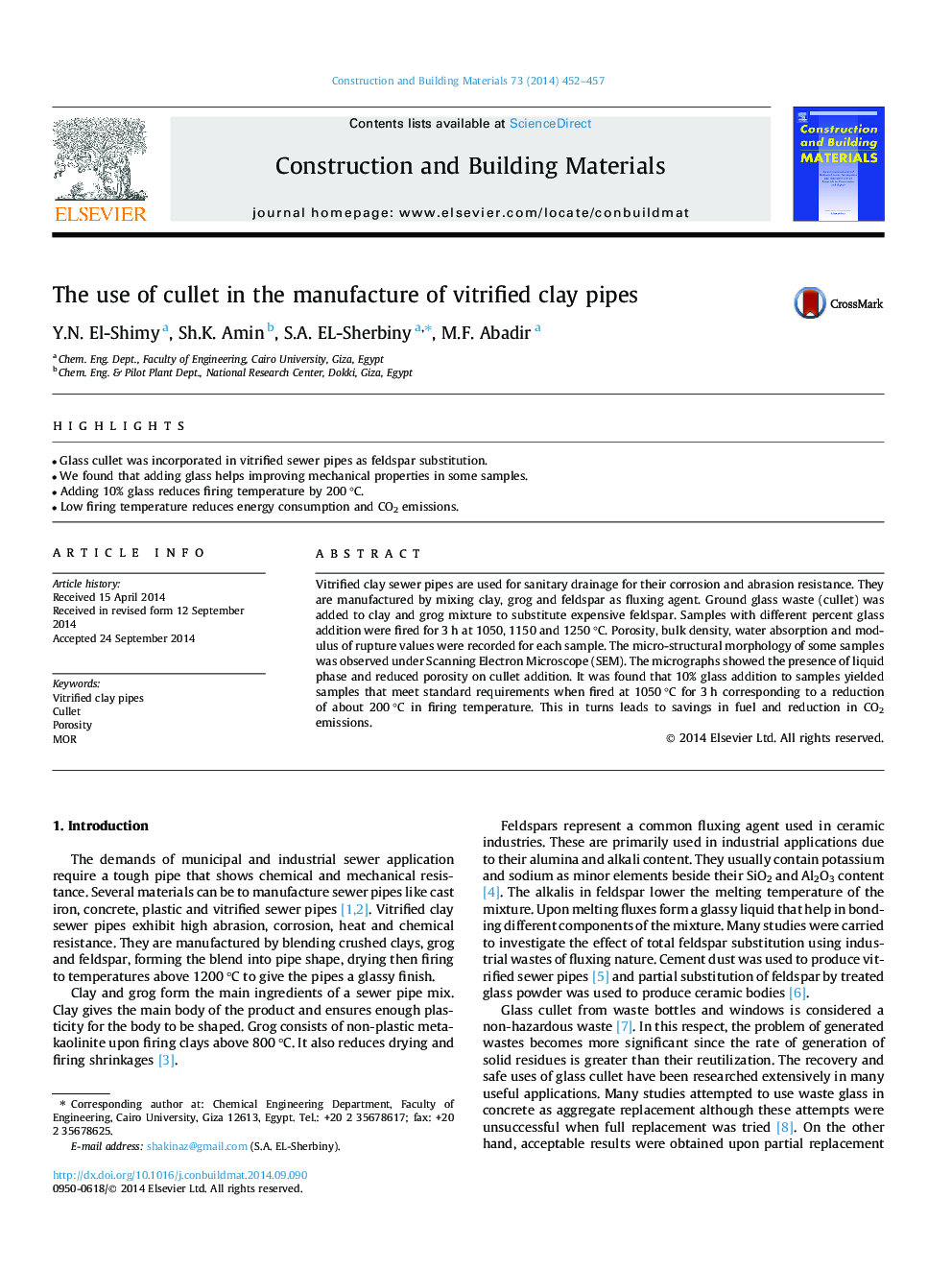| Article ID | Journal | Published Year | Pages | File Type |
|---|---|---|---|---|
| 6722171 | Construction and Building Materials | 2014 | 6 Pages |
Abstract
Vitrified clay sewer pipes are used for sanitary drainage for their corrosion and abrasion resistance. They are manufactured by mixing clay, grog and feldspar as fluxing agent. Ground glass waste (cullet) was added to clay and grog mixture to substitute expensive feldspar. Samples with different percent glass addition were fired for 3 h at 1050, 1150 and 1250 °C. Porosity, bulk density, water absorption and modulus of rupture values were recorded for each sample. The micro-structural morphology of some samples was observed under Scanning Electron Microscope (SEM). The micrographs showed the presence of liquid phase and reduced porosity on cullet addition. It was found that 10% glass addition to samples yielded samples that meet standard requirements when fired at 1050 °C for 3 h corresponding to a reduction of about 200 °C in firing temperature. This in turns leads to savings in fuel and reduction in CO2 emissions.
Related Topics
Physical Sciences and Engineering
Engineering
Civil and Structural Engineering
Authors
Y.N. El-Shimy, Sh.K. Amin, S.A. EL-Sherbiny, M.F. Abadir,
